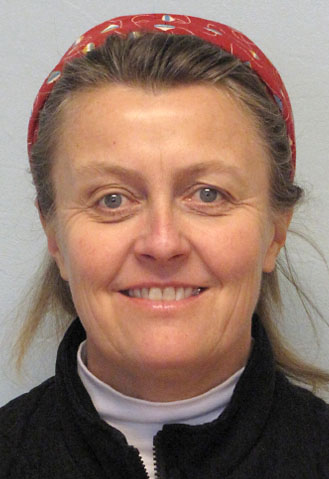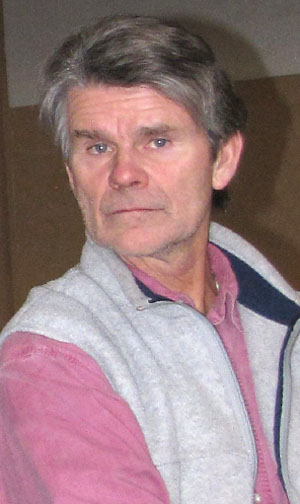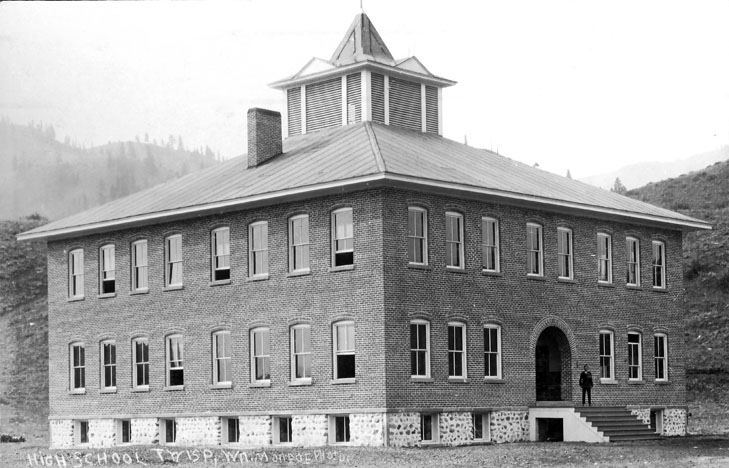home | internet service | web design | business directory | bulletin board | advertise | events calendar | contact | weather | cams

|
Celebration Social  Kirsten Ostlie, Methow Valley Community Center manager, holds the only full-time paid position there. Kirsten Ostlie, Methow Valley Community Center manager, holds the only full-time paid position there.An informal cake and coffee social will start at 3 p.m. at the Methow Valley Community Center and run until 5 p.m. on Friday, Jan. 27 to help celebrate the building’s 100th birthday. Kirsten Ostlie, center manager, is hoping that alumni of Twisp School will come and share stories with each other and the public. The Twisp Library will be honoring its many volunteers the same afternoon. The center is open 9 a.m. to 5 p.m., Monday through Saturday, year around. It is one of the largest and busiest buildings in the valley and is operated by a board of directors. Current members are: Bob Elk, president, a 35-year resident of Carlton who also is president of the Methow Valley Farmers Market board; Carol Geertsema, vice president; Julie Wehmeyer, secretary/treasurer; and at large members Ted Wilhite, Donna Schulz and Carolyn Sullivan. “This building is taken for granted by the community,” Elk said, adding that very few valley residents are on the center's membership list. One of the board’s priorities is to recruit members this year. The cost is $20 for individuals and $40 for families. Ostlie has lived in the valley for 30 years. She holds the MVCC's only full-time paid position and oversees day-to-day operation. Ken Bolyard is the part-time janitor and Bill Stratmann, the part-time maintenance man. "We get hundreds of people in here every day,” Ostlie says, listing some of the activities and classes – indoor soccer, men’s and AAU basketball, roller skating, yoga, martial arts and line dancing. She said the arts are represented by tenants such as the Cascadia Music Association, Door No. 3 print studio, Lorrie Wilson’s dance school, Pipestone Music, Studio 7 Rural Roots Media and Terry Hunt’s guitar studio.  Bob Elk is president of the 6-member board of directors for the community center. Bob Elk is president of the 6-member board of directors for the community center.The Methow Valley Community Theater has been staging productions in the gym for 27 or 28 years, Ostlie said, adding that the Twisp Library has been in the building about the same amount of time, as have the annual holiday bazaars held in November and December. Anyone can rent the gym, with or without the kitchen. There is a separate fee for rolling skating parties. There is no fee for memorial services, except for kitchen use. A recent call by the Twisp Chamber of Commerce to upgrade the Visitor Center brought proposals from both the Community Center and TwispWorks, the Twisp Public Development Authority created to acquire and develop the former U.S. Forest Service property at the edge of town. It’s no secret that feelers from the PDA went out to many of the community center’s core tenants. “This is a small place,” Ostlie says. “Sure, there’s an undercurrent there, but I think both groups are trying not to step on each other.” The center’s board and Ostlie are busy planning additional centennial year events. And the Twisp Alumni Association is considering an informal school reunion, probably a July picnic in the park adjoining the parking lot plus tours of the building. Helen Krinke, who just celebrated her 99th birthday, is the oldest living alumni and is sure to be recognized along with other old-timers. Board member Wilhite is researching how to get the building listed as an historic place. And Schulz, who has a deep interest in preserving history, is leading a group gathering stories and photographs for a publication. Elk said he considers the centennial a time to honor the building’s history while also looking into its future. “How do we make sure we acknowledge everything that’s happened in the past...and carry that forward into the future?...I want to make sure we keep the sense of community.”
Comments
|
 A portrait of the Twisp School, first occupied on Jan. 15, 1912. The first eight grades used the first floor and Twisp’s first high school the second story and basement, dubbed “the dungeon.” Photo courtesy Shafer Museum.
A portrait of the Twisp School, first occupied on Jan. 15, 1912. The first eight grades used the first floor and Twisp’s first high school the second story and basement, dubbed “the dungeon.” Photo courtesy Shafer Museum.